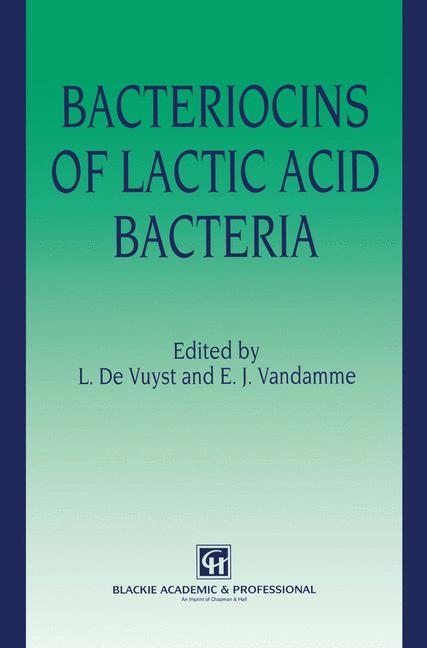
Bacteriocins of Lactic Acid Bacteria
Springer-Verlag New York Inc.
978-1-4613-6146-6 (ISBN)
- Titel ist leider vergriffen;
keine Neuauflage - Artikel merken
1. Lactic acid bacteria and bacteriocins: their practical importance.- 2. Taxonomy of lactic acid bacteria.- 3. Antimicrobial potential of lactic acid bacteria.- 4. Bacteriocins produced by Lactococcus lactis strains.- 5. Nisin, a lantibiotic produced by Lactococcus lactis subsp. lactis: Properties, biosynthesis, fermentation and applications.- 6. Genetics and protein engineering of nisin.- 7. Lacticin 481, a lantibiotic produced by Lactococcus lactis subsp. lactis CNRZ 481.- 8. Diplococcin produced by Lactococcus lactis subsp. cremoris.- 9. Lactostrepcins, bacteriocins produced by Lactococcus lactis strains.- 10. Lactococcins, bacteriocins of Lactococcus lactis.- 11. Bacteriocins and bacteriocin-like substances from Lactobacillus.- 12. Lactocin 27, a bacteriocin produced by homofermentative Lactobacillus helveticus strain LP27.- 13. Lactacin B, a bacteriocin produced by Lactobacillus acidophilus.- 14. Lactacin F, a small hydrophobic heat-stable bacteriocin from Lactobacillus johnsonii.- 15. Helveticin J, a large heat-labile bacteriocin from Lactobacillus helveticus.- 16. Sakacin A produced by Lactobacillus sake Lb 706.- 17. Lactocin S, a lanthionine-containing bacteriocin isolated from Lactobacillus sake L45.- 18. Bacteriocins produced by Camobacterium species.- 19. Bacteriocins of Pediococcus.- 20. Pediocins of Pediococcus species.- 21. Bacteriocins produced by Leuconostoc species.- 22. Bacteriocins produced by Streptococcus thermophilus.- 23. Bacteriocins of Enterococcus.- 24. Enterocin 1146, a bacteriocin produced by Enterococcus faecium DPC 1146.
| Zusatzinfo | XI, 539 p. |
|---|---|
| Verlagsort | New York, NY |
| Sprache | englisch |
| Maße | 155 x 235 mm |
| Gewicht | 836 g |
| Themenwelt | Schulbuch / Wörterbuch |
| Geisteswissenschaften | |
| Naturwissenschaften | |
| Sozialwissenschaften | |
| ISBN-10 | 1-4613-6146-X / 146136146X |
| ISBN-13 | 978-1-4613-6146-6 / 9781461361466 |
| Zustand | Neuware |
| Haben Sie eine Frage zum Produkt? |
aus dem Bereich


